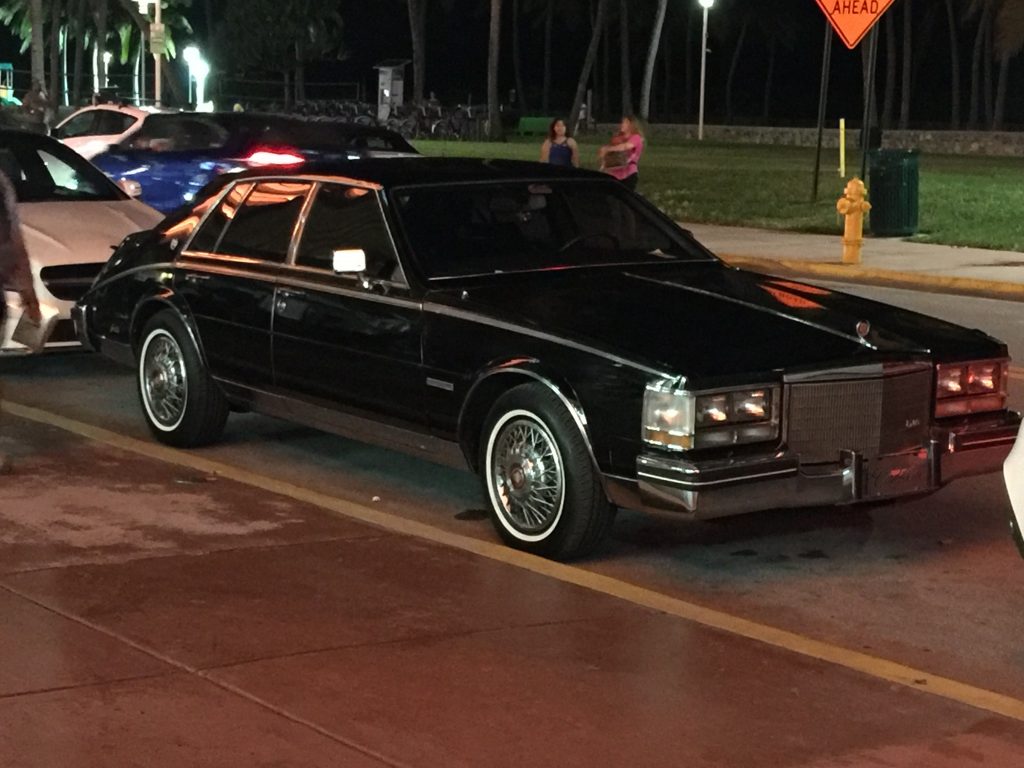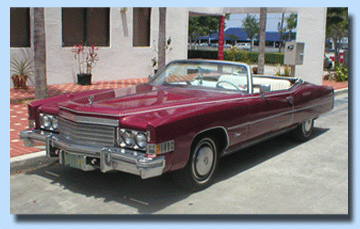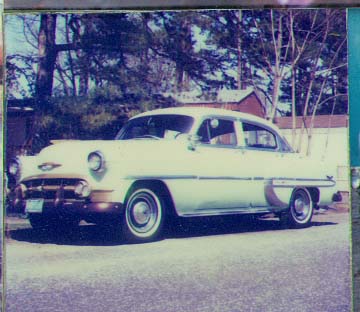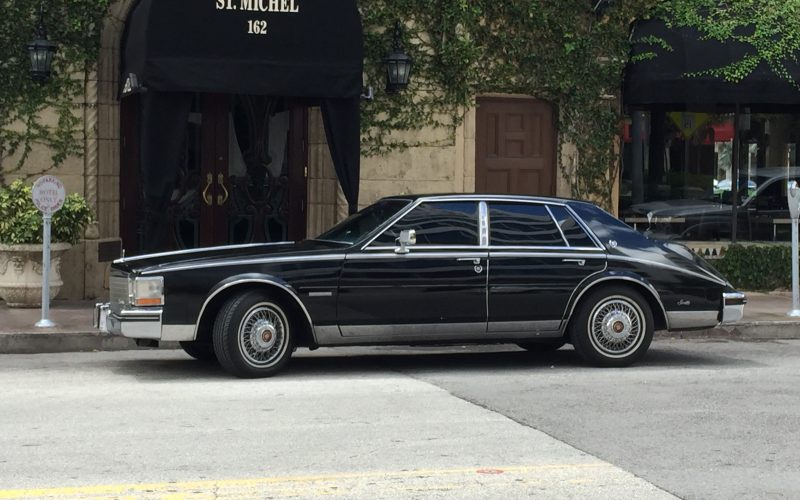A real hep cat needs a cool set of wheels. New Toyotas and Kias just don’t make the grade. If you want to arrive in style, you need to be driving a vintage car.

Man, I’ll tell ya…there’s really nothing like cruising down the main line in cool, classic car. Since I got my license in 1986, I’ve only driven vintage cars or newer cars with a retro look. ’65 Chrysler Newport, ’63 Imperial, 78 Lincoln Town Car, ’75 Cadillac Eldorado with Superfly custom work, 1956 Buick Century Station Wagon, and a 1974 Eldorado Convertible are just a few of the classy classics that were my daily haulers. So you might say driving a vintage car daily is my thing. I currently drive a pristine 1985 Cadillac Seville, the last year for the slant-back design that was a throw back to mid-century Rolls Royce and Bentley models. Does she turn heads? You know it.

Cruising down the highway in a car with history can be pure pleasure. Sure, new cars have lots of fancy gadgets, but is the cruise control on your Honda called “Auto Pilot”, or does the air conditioning have a chrome lever that says “MAX COOL”? They did on my 1963 Imperial Crown Southampton.
Let’s face it, when you drive up to the Mai Kai in Fort Lauderdale in your two-year old BMW SUV, nobody notices, even though you paid as much as a small house for it. Pull up in a 1974 Cadillac Eldorado convertible in Cranberry Firemist with the top down, and everyone stops what they’re doing to see who the movie star is. And no matter where you go, the valet will always park YOUR car up front.

After all, if you’re going to live in a mid-century house, with mid-century furniture, and dress mid-century style, how can you justify driving a non-mid-century car?
Of course, driving a 30, 50, 70 year old beauty can have its challenges. Even restored to mint condition, it’s still an old car…basically a used car…and eventually you’re going to have to do some maintenance. Cars from the 50s, 60s and 70s were built much differently than today’s cars, and require a lot more upkeep. Frequent tune ups, engine and brake adjustments, fluid flushes and wheel alignments are some of the things you must expect. If the car’s not restored mechanically, also expect to replace parts like switches, brake cylinders, vacuum hoses and suspension items the more you drive. These parts are decades old, and they do wear out. But isn’t it all worth it, in the end?
Depending on the geography of your locale, your driving habits and mileage needs, and your mechanical ability, there is probably a vintage car out there that’s right for you. If you can do some work yourself and have the right tools, you can pick pretty much any car or truck you want and go from there. If you’re not mechanically inclined, keep in mind you’ll be spending some big bucks to keep your vintage car on the road. Also remember that getting 18 MPG in the 50s and 60s was a big deal, and those big cars got 10 MPG on a good day, down hill, with the wind at their back. Also racking up 2,000 miles a month on a 60 year-old car is going to give you heartaches. You might want to consider something a little newer that looks older…like my 1985 Cadillac Seville, that has the classic Rolls Royce bustle-back styling, a late-1970s Lincoln Mark V, or even a Fiat Spider.

Another thing to keep in mind is that cars made up until the late 1950s, with the exception of luxury cars, are generally much less complicated than later models. No computers or complex electronics, simple mechanical systems and made-to-last parts like door handles and window cranks make these cars a lot easier to maintain than vehicles from the 60s, 70s and 80s. The drawbacks are that they aren’t as easy to drive (mostly manual steering and transmissions), the brakes don’t work as well as more modern systems, and six-volt (opposed to modern 12-volt) battery systems can be problematic. If you’re doing more than 5-mile drives, you might want to consider a “resto-mod”, a vintage car that retains its original look but uses a modern engine, transmission, suspension, brakes and electrical system. This can be a great option for someone who wants it all.
-Tiki Chris P, reporting from the garage behind Pirate’s Cove Tiki Bar, Somewhere in Paradise

We have plenty of affordable classic cars for sale at Cardinal Classics NE/AR, check us out on Facebook